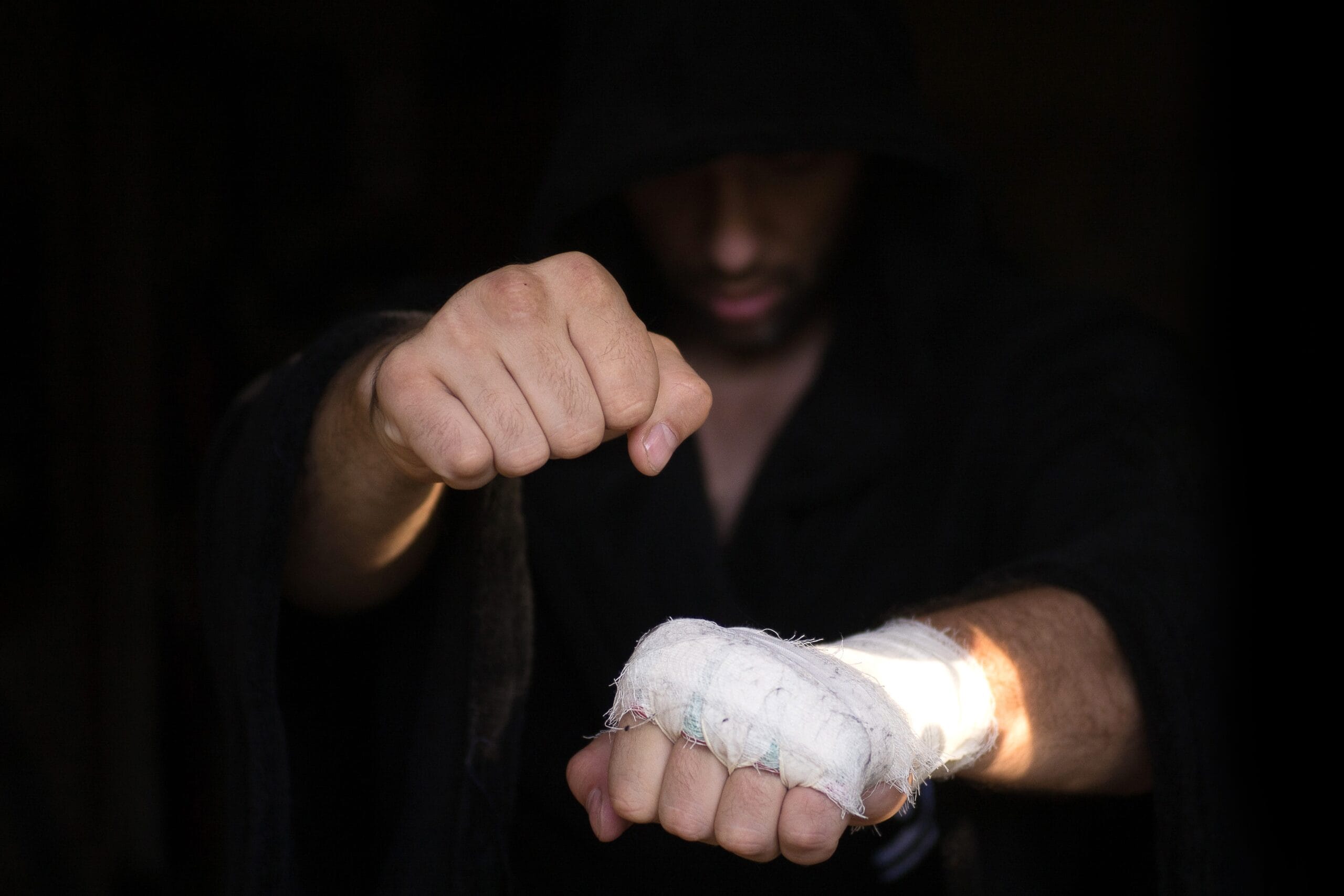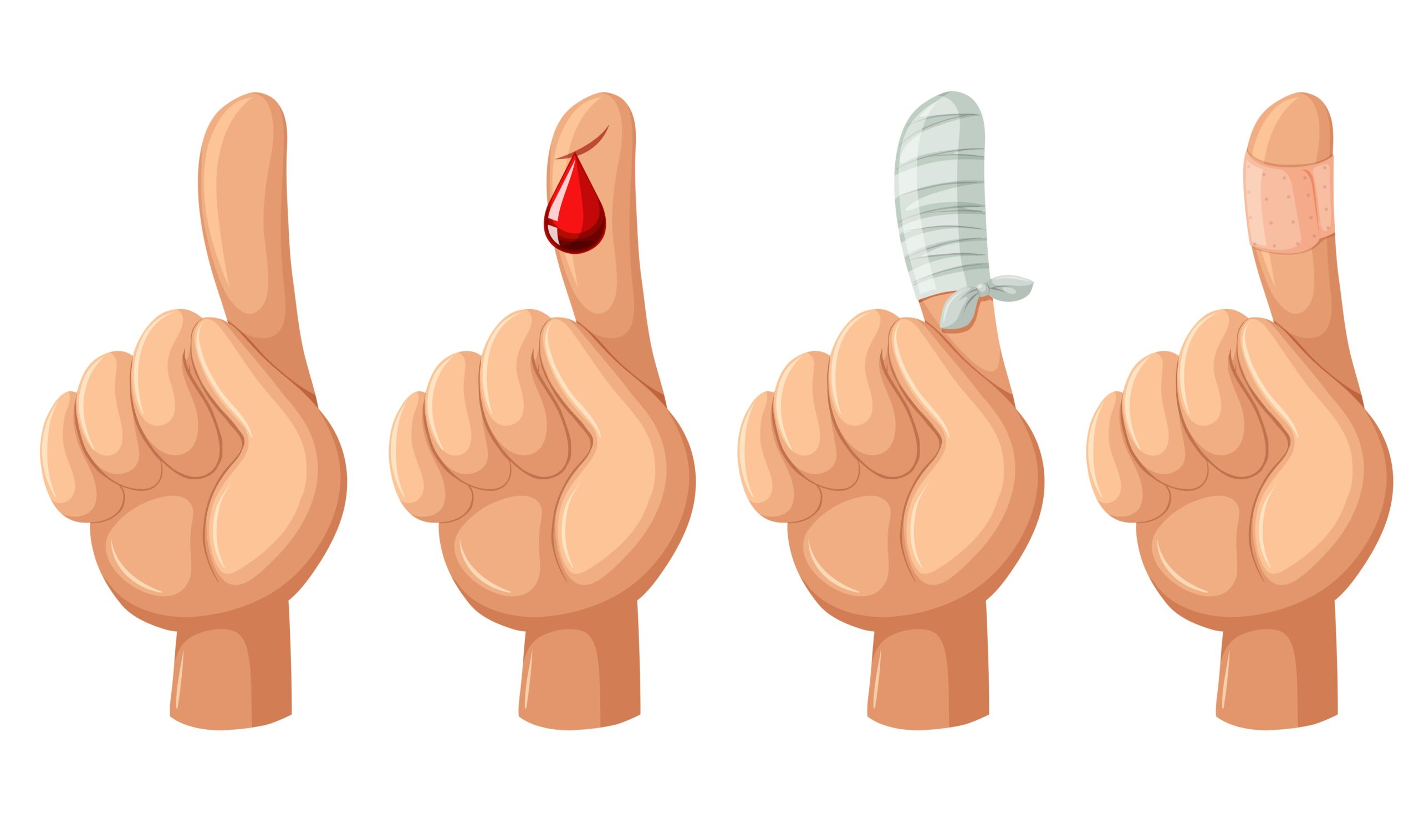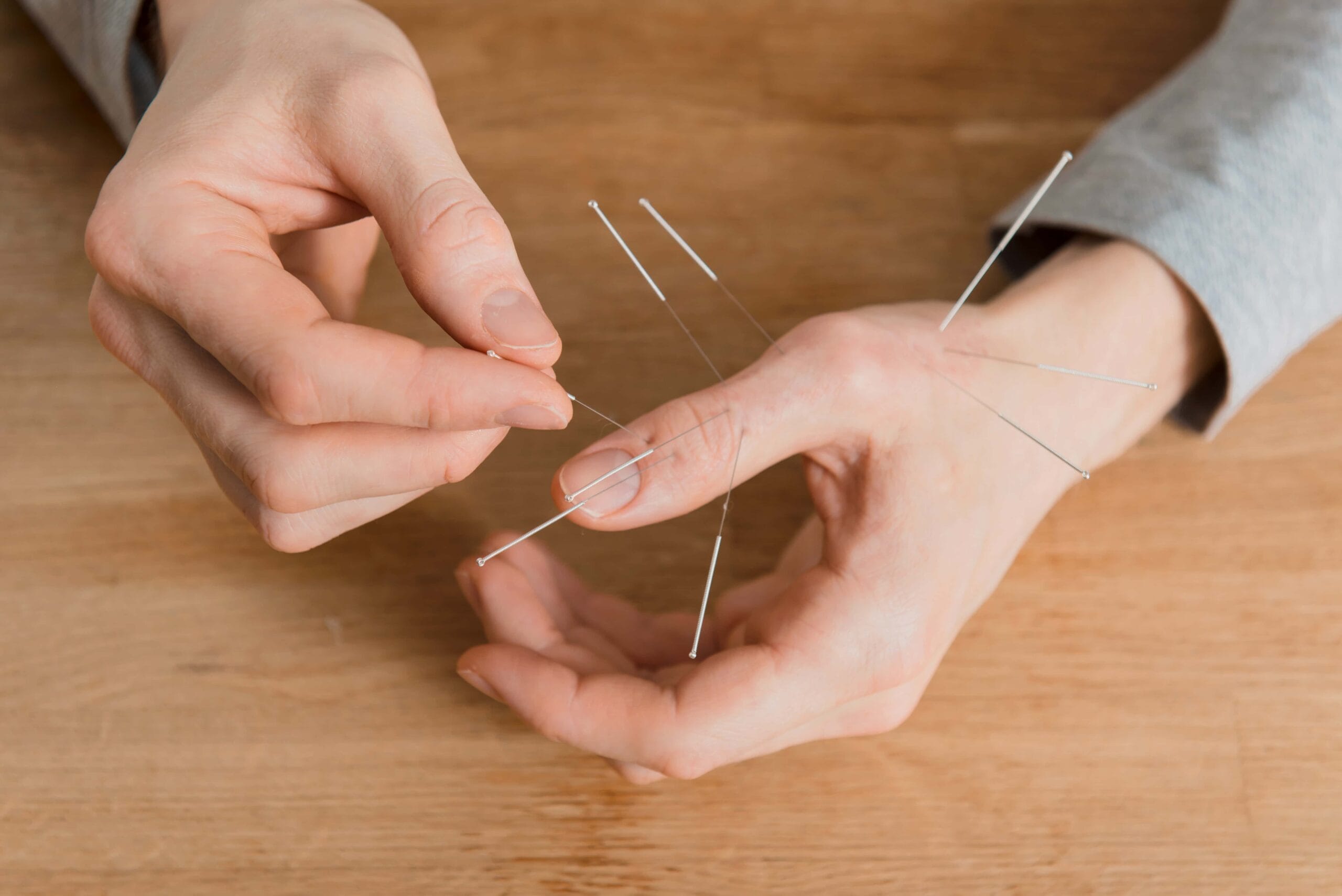Combat Arts Finger Injuries Overview

Typically those in the combat arts wear gloves in some martial arts. However, in training camp and actual fights, the fingers are vulnerable. The bones are small, held together by thin ligaments. It’s easy to tear a ligament, dislocate a finger, or fracture the fingers like a professional MMA fighter.
Finger Injury Causes
MMA fighter Harvey Park suffered a horrific finger injury during a fight against Leville Simpson. The “Fightbot” broke his fourth finger in the left hand. It popped out and pierced the skin. The injury was gruesome. Park still played through the pain and eventually won the fight. He even shared his X-ray with his fans. His finger was avulsed completely.
While grappling or performing moves in several martial arts like judo and BJJ, the fingers play an important role in gripping. Sudden flexion and extension injuries can cause tendon avulsion injuries. If weapons are involved then, lacerations and amputations are common. Crush injuries are also common when a heavy object or weight is dropped on the fingers. Ringside, these injuries are accidental.
Finger Injury Symptoms

Types of Finger Injuries
The injuries in the fingers are usually classified based on the type of injury. Many fighters continue to train despite the pain while splinting injured fingers. This spells disaster as it limits the mobility of the finger and prevents healing. However, injuries to fingertips heal quickly because of the excellent blood supply. Finger injuries must be promptly identified and treated. Some common injuries include Crush injury, Amputation, and Mallet Finger.
Splintered an Injured Finger Still Experiencing Pain During Training?
Learn How to Manage a Quicker Recovery!
Related Injuries
Crush injuries take place due to compressive forces. These injuries could be open or closed. Objects or persons falling on the hand can cause the fingers to be crushed. This can involve a fracture of the bones, tendon tears, and muscle injuries. There’s a classification of crush injuries. Allen's classification has four types. Type 1 which involves the pulp. Type 2 involves the pulp and the nail bed. Type 3 includes partial loss of the distal phalanx. Type 4 causes injury proximal to the lunula.
Symptoms
Causes
Crush injuries are when the muscles are damaged due to pressure. This could be due to a coming under heavy weapon or a person awkwardly landing on the digits. Even a punching action without gloves can cause the fingertips to be crushed. Following the crush injury, compartment syndrome is a very common complication.
To learn how Crush injury is diagnosed Click Here
This is a closed tendon injury that occurs due to high velocity and contact sports. Commonly seen during rolling moves. The finger pops or gets pulled away after getting stuck in a gi or during a high-speed move. Any striking or stubbing motion, where the finger bends backward can also cause the tendon to tear and lead to a mallet finger.
Mallet finger injuries happen when the extensor tendon is torn. The tendons on the top of the hand that extends or straighten the fingers are called extensor tendons. These tendons connect the muscles to the bones. The distal interphalangeal joint (DIPJ); the metacarpophalangeal joint (MCPJ), are the joints that connect the fingers to the carpal bones. Commonly, rolling or striking moves in BJJ or grappling, can cause a violent flexion or lacerate the dorsum of the finger at the DIPJ.
To learn how Mallet Finger are diagnosed Click Here
Any direct blow or a crush injury to the distal finger can damage the nail bed. As blood enters the space it exerts more pressure. Nailbed avulsions can be associated with subungual hematomas, fractures of the finger, or avulsion of the finger joint. In martial arts, nail injuries take place due to sudden moves.
Sometimes, simply hooking a finger into an opponent’s gi can cause a nailbed to get avulsed if he jerks away or the movement is sudden and forceful. A crush injury where the finger is crushed under an opponent or a finger fracture due to a fall can also cause a nail bed injury.
To learn how Nailbed Injuries are diagnosed Click Here
Common Injuries
You can read more about common finger injuries such as lacerations and dislocations in our Common Injuries section.
Finger Injury Diagnosis
The diagnosis of finger injuries is done through various tests and a thorough physical exam. While imaging forms the cornerstone of diagnosing finger injuries, nerve conduction tests are also integral to testing the functions of nerves innervating the finger.
Injury Specific Diagnosis
Physical Exam
After inspecting hand dominance, whether the wound is dirty or clean, reviewing tetanus status and time since injury, the doctor examines the injury. He will compare it to the normal contralateral hand. Any abnormal positioning of the hand is noted. The capillary refill exam is done on the nail bed. The blood flow to the finger is observed through this test. The finger is tested via moving 2 point discrimination. The fingers are tested for active and passive range of motion. Doctors will also check for joint instability and hematomas.
Imaging
X-rays are usually diagnostic. The affected digits will require plain films in AP and lateral views. X-rays of the entire hand must be taken. X-rays of the opposite hand are also taken for comparative studies.
Lab Tests
CBC is dome to monitor blood loss. The coagulation profile is checked. Unless surgery is needed, no other blood tests are required.
To learn how a Crush injury is treated Click Here
Physical Exam
Doctors will ask all those in the combat arts about hand dominance, their occupation, the time of injury, how the injury occurred, any associated injuries and when was their last meal. This will influence the treatment and the management of the amputated finger.
On physical exam, they will check the level of amputation, which structures are involved, whether the nerves and blood vessels are affected and to what extent. They must assess whether the amputated part is suitable for replanting.
The Sebastian and Chung classification is used for finger amputations:
Zone 1- distal amputations
Zone 1A - distal to lunula
Zone 1B - between lunula and nailbed
Zone 1 proximal amputations
Zone 1C - between flexor digitorum profundus insertion and neck of the middle phalanx
Zone 1D - between the neck of the middle phalanx and insertion of the flexor digitorum superficialis
Imaging
X-rays of the affected finger and amputated part are done. This assesses bony injuries, bone quality and it will determine treatment through bony fixation.
Lab Tests
CBC has to be done to assess for blood loss. Coagulation studies are done for those on anticoagulants.
To learn how Amputation is treated Click Here
The physical exam must observe DIPJ flexion at rest. The fingers are all examined but this one sign is diagnostic. That is the inability to straighten or extend the DIPJ during the range of motion tests. It is conclusive for the mallet finger. Persistent tenderness and swelling near the DIPJ are also indicative. Doctors will isolate the DIPJ to accurately diagnose a mallet finger.
This is mostly a clinical diagnosis. X-rays are done to assess bony injuries. An anterior-posterior (AP), lateral, and oblique views are ordered. The X-ray centers at the DIPJ of the affected finger. These views are important as they classify the mallet finger category. It's essential to differentiate a bone injury from a tendon mallet injury as the treatments will differ. The lateral view is the best for assessing any avulsion fractures. This view can also check for the palmar subluxation of the phalanx. Rarely, ultrasound is also used to view the tendons.
Blood tests are not required unless part of the pre-operative clearance. The type of treatment will determine the necessity of blood tests.
To learn how Mallet Finger is treated Click Here
The physical examination of the nailbed is done where there is appropriate lighting to visualize the injury carefully. An assessment can be made based on the history but a physical exam may reveal hematomas or hidden fractures. The doctors look for lacerations, closed or open fractures, and any associated amputations of the fingertip.
Evaluation should include assessing the finger. The associated finger is examined for sensation, the range of motion at the interphalangeal joints, and capillary refill. If injuries to the bones, joints or soft tissue is suspected in addition to the nailbed, then X-rays of the affected finger and hand with two or three views are done.
No lab tests are required to diagnose injuries to the nailbed.
To learn how Nailbed injuries are treated Click Here
Common Diagnoses
In our Common Diagnoses section, find out about how doctors use various imaging tests, nerve conduction studies, and other tests to diagnose finger injuries.
Finger Injury Treatment
The treatment of various finger injuries depends on the type of injuries. Crush and amputation injuries are critical in the first 12 hours and the emergent treatment is crucial. Other avulsion injuries will require surgical repair. Rehabilitation also forms a major part of therapy as early flexibility is promoted instead of immobilization.

Prolonged immobilization tends to limit joint mobility. Finger injuries are also liable to infection fairly quickly due to its robust blood supply. All finger injuries must be followed up often to watch out for infections.
Injury Specific Treatment
Emergency
Emergency treatment depends entirely on the type of injury. Severe crush injuries involving a mangled limb will require a team approach from hand surgeons, orthopedic doctors, and rehabilitation medicine. Advanced Trauma life support (ATLS) and vitals signs check are administered. First aid is done if possible ringside. The injury is irrigated and examined. Larger trauma with lacerations and avulsion will need surgical repair.
Medical
The medical treatment depends on the location and extent of the injury. For those with subungual hematomas, the hematoma must be decompressed and drained. If there is an associated fracture of the distal joint, then it must be immobilized with an aluminum splint. Nailbed injuries that are simple can be sutured using absorbable sutures. If the nail bed is lacerated, then blunt removal of the nail is done. The nail bed is closed with absorbable sutures. The nail is then replaced to promote new nail growth. Associated closed fractures of the distal phalanx are repaired via splinting. For unstable fractures and those that involve the articular surfaces, surgical repair is required with a digital nerve block and soft tissue repair. After the fracture is stabilized, aluminum splinting is advised.
Home
Splints are left on till there is no pain. Antibiotics are prescribed. In some transverse fractures, weekly X-rays must be done. Finger and hand injuries need to be monitored for compartment syndrome. Watch out if the pain is far worse than the injury. If the skin becomes, shiny and tight, then the muscles might be developing compartment syndrome and need an immediate incision. Compartment syndrome can cause the muscles to necrose and might require amputation if not caught on time.
Emergency
Once a finger amputation has occurred it’s important to seek emergent care. The ischemic tolerance time is about 12 hours if warm and up to 24 hours if cold. If the amputations are closer to the body, then this time is exactly half. The amputated part of the finger must be covered in a normal saline-soaked gauze, sealed in a plastic bag or box, and submerged in icy water. There must be no direct contact with ice.
Direct contact with ice will damage the tissue and kill the viable amputated part. If the amputation is larger and closer to the body, the presence of muscle will hasten the death of the tissue. Irreversible changes in muscle take place after 6 hours without blood supply.
Medical
The first step is the first aid provided in the ED. With the preserve amputated part, tetanus vaccination is given and antibiotics are started pre-emptively.
Replantation is done in healthy fighters with clear amputation, thumb amputation, multiple finger amputations, amputations at or close to the palm, and single finger amputation that are zone I.
Replantation is not done in the case of single-digit injury through zone II, smokers, in severe crush injuries, mangled limbs, heavily contaminated injuries, segmental injuries, prolonged warm ischemia time, those with simultaneous avulsion injuries, in fighters where the amputated part is not preserved properly, previous surgery to affected finger and ‘red line' or 'red ribbon' sign seen in vessels during surgery. This sign indicates the level of injury to the vessels.
In the operating theater, the amputated part must be assessed. Its suitability for replanting is examined. All structures are dissected and identified. This is particularly for the neurovascular bundle. If there are no suitable blood vessels, then replantation is canceled.
There is an order for repair in replantation:
First, the bone is fixed to allow repair of soft tissue. This is followed by the repair of the extensor and flexor tendons.
Nerve repair and arterial anastomosis follow. If suitable veins are present, then venous anastomosis is undertaken
To fix the bone, two Kirschner wires or plates are used. Sometimes, the bone is shortened before fixation. This allows closure of the soft tissues and repair of neurovascular structures.
Home
The post-operative management is equally important to ensure rapid healing. The fighter must maintain adequate hydration and circulation volume due to previous blood loss. Pain control is advised with NSAIDs.
Keep the affected limb raised and warm. Check the color and temperature of the replanted digit. The doctor will teach you how to monitor capillary refill in the finger. Do not change any dressings for the first 48 to 72 hours. This will ensure minimal manipulation of the repair.
For artery-only replants doctors may make stab incision to the amputated tip. Apply heparin-soaked gauze to allow venous drainage. Another controversial method is to use leeches instead. This treatment is halted once the finger looks pink with a normal capillary refill. It indicates that the veins have been drained.
Some fighters may require further surgery like bone grafting, tenolysis, and tendon transfer. Fighters return to play within 2 to 3 months provided no complications develop. Functional recovery is better in distal injuries than proximal. Movement and power are better in distal amputations as well. Start rehabilitation as advised post-injury.
Most fighters on discovering an injury or hearing a pop in their fingers on the mat, tape their fingers and continue to fight on. However, imaging must be done to determine the type of injury and then further treatment.
If there are no large articular disruptions or subluxation, conservative treatment with a splint suffices. There are no standard guidelines about the type of splint, the duration, and any supplemental night orthotic wear. The fighter can be prescribed the Stax splint or an aluminum foam splint. This is molded to create hyperextension at the DIP joint. The splinting is usually done for 6-8 weeks.
Following that, there is progressive flexion physical therapy at six weeks.
Avoid hyperextending the DIPJ and freely move the PIPJ.
Open injuries need cleaning in the OR and surgical repair. Surgery is advised for fighters who have large bone fragments, those with joint mal-alignment, those with Acute Type II and III injuries, fighters who have inadequate DIP joint extension after splinting, and for fighters who seek treatment months after injury.
Surgical techniques could involve closed reduction with percutaneous pinning (CRPP), open reduction and internal fixation (ORIF), and reconstruction of the torn tendon.
Keep the splint on at all times. Removing the splint will reset the healing time from 6 weeks to zero. Prevent any flexion of the injured joint.
The injury must be thoroughly cleaned with minimal debridement of both the nail bed and nail root. A doctor will reposition and anatomically repair significantly disrupted nail beds and nail roots. If this is not done accurately and immediately, nailbed growth is affected leading to deformed nails.
Close approximation of the nail bed preserves the skin folds surrounding the nail margins. Any adhesions between the eponychium, nail bed, and root are prevented by replacing the nail or gauze packing to maintain the space.
Even if there is partial nail avulsion or the surrounding nail fold has been disrupted, then nail has to be removed. If there are associated lacerations of the nail bed blunt removal of the nail is necessary. The nail bed is then closed with absorbable sutures. The nail is replaced to allow new nail growth and the nail fold space is maintained with gauze packing.
Some doctors may just apply Vaseline gauze after repair and allow it to separate on its own. A plaster volar splint rounded at the end can protect the fingertip. Elevate the finger and check the injury in three days with a dressing change. Sutures in the nail or the gauze packing under the eponychium are removed in two weeks.
Common Treatments
Doctors treat finger injuries through a variety of ways including, physical therapy, grafts, medications, and surgery. You can read more about it in our Common Treatments section.
